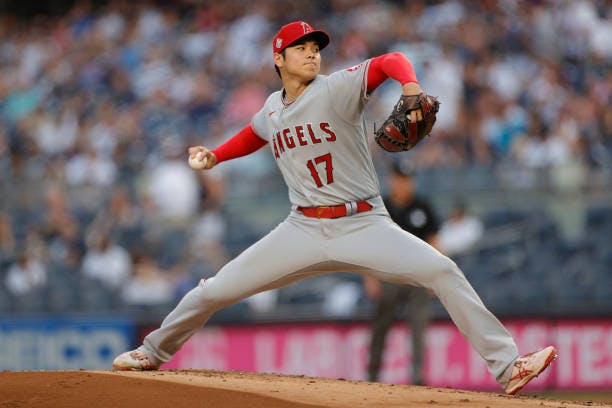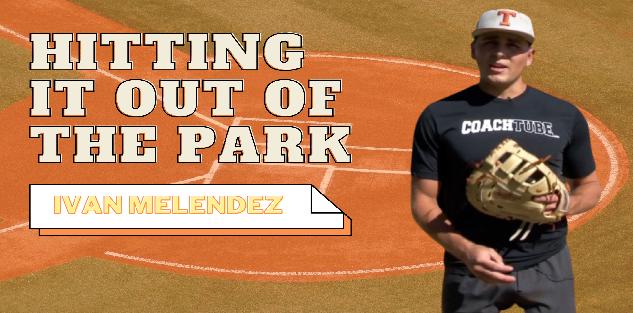Featured courses
- Understanding The Shift by Brandon Ogle
- Two Drills to Improve Outfield Movement and Communication by Grant Young
- The Ultimate Resource For Coaching Youth Baseball by Jackson Chlebowy
- Become a Master at Bunting by Brandon Ogle
- 5 Reasons Why There Is More To Good Base Running Than Just Speed by Brandon Ogle
- Three Injury-Prevention Tips For Your Offseason Pitching Program by Grant Young
- How to Teach Hitting to the Next Generation by Grant Young
- Developing Defensive-Minded Baseball Catchers by Grant Young
- 3 Baserunning Tips to Score More Runs in Baseball by Grant Young
- 5 Outfield Drills to Work on in Season by Alec Burris
- Keys For Scoring More With Runners on First and Third Base by Grant Young
- How to Develop Your Game to Become a Five-Tool Player by Brandon Ogle
- 3 Coaches Share the Keys to Running Baseball Practice the Right Way by Grant Young
- Four Drills to Sharpen a Baseball Hitter’s Vision at the Plate by Grant Young
- Four Quotes to Hit Better With Two-Strikes by Grant Young
- Four of Former MLB Pitcher Juan Nieves’ Movement-Based Pitching Drills by Grant Young
- Two Tips For Developing an Elite Baseball Bullpen by Grant Young
- Overcoming the Four Challenges of Indoor Baseball Practices Because of Weather by Grant Young
- Three Tips to Make Your Baseball Team Mentally Tougher by Grant Young
- Three Priceless Philosophies to Motivate Your Baseball Team by Grant Young
- Three Offseason Baseball Drills to Simulate Competition by Grant Young
- Three Baseball Offseason Strength and Conditioning Essentials by Grant Young
- Important Ways to Improve Your Baseball Team’s Baserunning by Grant Young
- Three Ways to Perfect Hitting Mechanics From an MLB Icon by Grant Young
- Catchers can influence pitchers...for bad or good by Drew Johnson
- Throwing Strikes and Playing Good Defense Equals Wins by Jose Ortiz
- Legendary Indiana Head Baseball Coach Bob Morgan’s Offensive Theory by Grant Young
- Tennessee Head Baseball Coach Tony Vitello on How to Practice Baserunning by Grant Young
- Three Great T-Ball Drills For Youth Baseball Players by Grant Young
- How to Manage a Baseball Pitching Staff by Grant Young
- Three Uncommon Tips to Become a Better Hitter by Grant Young
- How a Baseball Coach Can Develop Strike Throwers by Grant Young
- Drills to Develop Elite Baseball Outfielders by Grant Young
- Baseball Training Exercises to Strengthen Arm and Bat Speed by Grant Young
- How to Use Bunting to Score More Runs by Grant Young
- How To Build An Elite Baseball Infielder by Grant Young
- Three Drills to Improve Your Baseball Team's Infield Play by Grant Young
- Three Keys to Curating a Pitching Staff’s Success by Grant Young
- 3 Techniques to Develop a Baseball Player’s Hitting Approach by Grant Young
- How to Cultivate Confidence Within Your Pitchers by Grant Young
- 5 Every Day Drills To Help You Become A Better Catcher by tyler Linderman
- How to Throw A Curveball by Brandon Ogle
- How to Assemble a Lock-Down Bullpen by Brandon Ogle
- How to Throw a Sinker by Brandon Ogle
- How to be a Smart Baserunner by Brandon Ogle
- Improving a player's slugging average by Phillip Woolgar
- The 8 Fundamentals of Pitching by Drew Johnson
- How to Throw a Deceiving Changeup by Brandon Ogle
- Step Up Your Outfield Defense With These Three Drills by Jose Ortiz
- 8 Baseball Drills Every Player Should Practice by Drew Johnson
- How To Become An Elite Defensive Outfielder by Tyler Linderman
- 5 Tips For Crushing A Curveball by Johnny Grassi
- LEGENDS FOR YOUTH INCLUSION BASEBALL CLINIC by Phil
- Fourteen Ways To Turn A .300 Hitter Into A .210 Hitter by Jay P. Granat, Ph.D.
- How To Become The Ideal Leadoff Man by Brandon Ogle

How to Throw a Sinker
- By Brandon Ogle
Former Dodgers great Sandy Koufax said, “I became a good pitcher when I stopped trying to make them miss the ball and started trying to make them hit it.” Although Koufax was known for his knee-buckling curveball, this quote applies perfectly to the art of a sinkerball. The sinker isn’t designed to be a major strikeout pitch. It doesn’t have the coolness factor of a 100mph fastball or a 12-6 curveball, but it does do one thing effectively: get hitters out.
Primary Use of the Sinker: Ground Ballsalls
The sinker is effective because it consistently forces hitters to turn over on the ball and induce a ground ball. Keeping the ball on the ground in the infield provides a number of ways to record outs. For example, take a situation where there are runners on the corners with one out. If you want to get out of this jam without anyone crossing home plate, you have two strategies to work towards. If you possess a dominant strikeout pitch, then you can go for the strikeout and then attempt to get the final hitter out. However, not everyone has nasty strikeout pitches they can lean on in jams. In this case, you try to get the hitter to turn over into a ground ball double play. In essence, this is the core use for a sinker.
Understanding the GripGrip
The nice thing about the sinker is that it isn’t a difficult pitch to learn the grip and release for. In fact, you can start out with the same grip as the two-seamer. Helpful Baseball Drills Provides a terrific narrative on how to get this grip.
“Place your index and middle fingers over the seams where the seams are closest together. With the sinker you could try placing the index and middle fingers on the outside edge of the seams. And the thumb rests directly underneath these two fingers in the open area on the baseball.” The more pitches you learn how to throw, the more you’ll realize the importance of mastering the grips before even learning how to throw the pitch.
Release: Tighter GripGrip
No matter what sinkerball pitcher you talk with, they’ll all stress the importance of a firmer grip. As evidenced by an MLB.com article, this grip creates friction against the air and “is what makes the ball sink, but it’s also what makes the pitch a few miles per hour slower than a normal fastball.” As a result, you witness a greater break in your sinker pitch. Another important note in terms of the release is to always keep your hand and fingers on top throughout the release. This will ensure the sinking occurs in a downward motion. As you can tell, there isn’t much to the release, but it is still critical to practice the release because one miscue can lead to batting practice taking place in an actual game.
Less Stress on the BodyBoLonger Outings, Longer Careerseers
In today’s baseball environment, one of the players most susceptible to major injuries is pitchers. Whether it be shoulder or elbow injuries, youth leagues are placing more and more restrictions on the amount of innings and pitches that can be thrown to attempt to diminish these risks. The sinker is a perfect weapon to combat these injury risks that are much more common when throwing higher percentages of curveballs or fastballs. The wrist doesn’t get twisted much, nor is there significant torque placed on the elbow or shoulder, which is a plus. Helpful Baseball Drills provides a great tidbit to lessen the risk even further. “Trying to apply the most pressure with the middle finger keeps the arm flowing in a natural motion, and less likely of an arm injury.” By focusing on characteristics like this, the sinker can be an arm-preserver for youth pitchers looking to take their careers to high school and beyond.
Keeping Hitters Off Balance: Mix-and-Match Pitchesches
Despite all of the positive qualities of a sinker, I’m not trying to persuade pitchers to scratch all of their pitches and throw 100% sinkers. It can be a terrific situational pitch complimenting others. The best all-around pitchers have a number of above-average pitches in their arsenal. With this said, I suggest pitchers work on mixing-and-matching their various pitches. As Warren Spahn once said, “Hitting is timing. Pitching is upsetting timing.” The best way to offset their timing is to have numerous pitches coming out of similar arm angles in a manner that the hitter doesn’t know what’s coming next. As I mentioned in the grip section, it has a similar grip as a two-seam fastball, but with a slightly altered release. If thrown successfully, the hitter could guess a heater is coming before it quickly dips on its way to the plate, thus inducing a grounder. The key is to focus enough time on the sinker just as you would for a curveball or changeup.
A Sinkerball Pitcher’s Worst NightmaremaAvoid Hanging the Sinkernker
If a sinker ball pitcher is hanging his pitches, then a baseball game can start to look like batting practice in an instant. This is because when the sinker is thrown up in the zone, it won’t experience the break that makes it so successful. For this reason, it’s easy to see why the sinker is a much more effective pitch for control pitchers as opposed to power arms. Much like a hanging curveball, the hanging sinker can be a bad omen for pitchers. After all, the point of a sinker is to induce ground outs and not fly outs. So, as a result, the pitch should start at the belt before breaking.
Top Sinkerball Arms in the GameGame
In recent years, we’ve seen a number of pitchers combat their lack of pitch speed with a ground ball-inducing sinker. Here are a few that have dominated the pitch:
-Brandon Webb – Despite struggling with injury issues, Webb possessed one of the most dominant sinkers of his era. Combated with a nasty changeup, curveball, and a fastball, Webb won the 2006 NL Cy Young Award. Thanks to his impressive arsenal of pitches, Webb wasn’t merely just a ground ball pitcher, but also racked up a solid number of punch-outs in his career.
-Chien-Ming Wang – The former New York Yankees’ pitcher has struggled with injuries in recent years. However, during his prime, he consistently stifle hitters with a power sinker. The unique part about his sinker was the speed he threw it with, as it consistently sat in 91-94 mph range. Furthermore, the efficiency he had in regards to the sinker’s command allowed him to achieve so much success early in his career.
Keep It Low Low
The best piece of advice I can give to an aspiring sinker is to keep the ball low. As I mentioned numerous times, a hanging sinker is a pitcher’s worst nightmare. It is nothing more than an average batting practice pitch. At the same time, don’t forget about perfecting the rest of the pitches in your arsenal to keep hitters guessing. In the end, you know the sinker is working when the hitters are hitting the ball on the ground.



